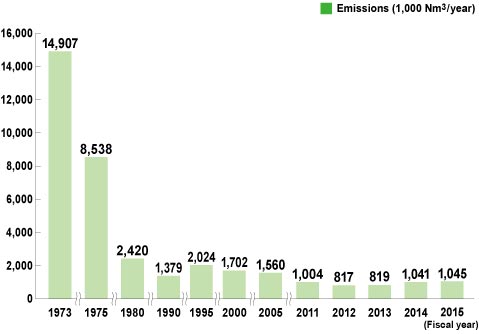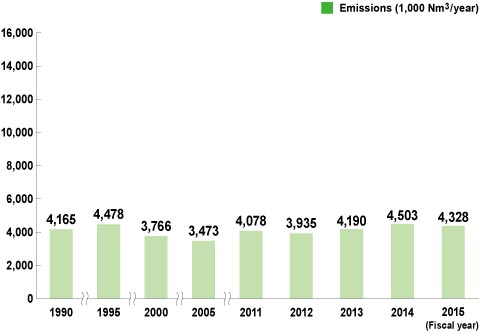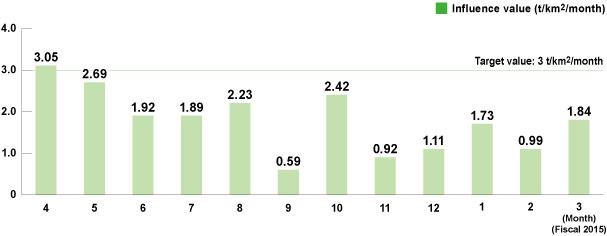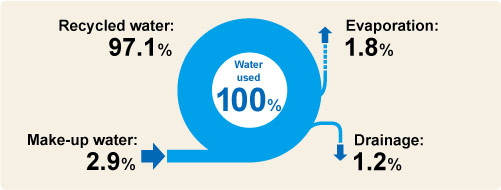As part of its basic environmental management policies, the Kobe Steel Group is committed to "environmentally friendly manufacturing" and pursues this commitment on a variety of fronts, including improvements to sustainable manufacturing processes, updates to equipment, introduction of efficient state-of-the-art equipment, and introduction of pollution control equipment, working to reduce environmental impact to the atmosphere and water. In the future, Kobe Steel and its Group companies will strive to reduce environmental impact even further.
In addition to measures that are meant to reduce energy consumption and limit production of SOx (sulfur oxide) during manufacturing processes, such as reductions to fuel consumption, use of low-sulfur fuels, and switching to municipal gas, we have also implemented exhaust-related measures such as desulfurization.
Likewise, in order to reduce NOx (nitrogen oxide) emissions, we have implemented efforts such as the use of low NOx combustion technology and energy-saving measures.
SOx Emissions (Kobe Steel)

NOx Emissions (Kobe Steel)

At Kakogawa Works, voluntary targets for dustfall in three neighboring locations have been set at 3 tons/km2/month or less, with a variety of measures set in place to maintain this goal.
In April of fiscal 2015 we failed to meet this target at one location. In addition to continuing previous measures, we will strive to prevent the scattering of dust by ensuring that anti-dust measures, such as daily sprinkling of water, are undertaken.
Steelworks Influence Value (Kakogawa Shinko Building)

The Kobe Steel Group reduces water consumption through measures such as improvements to manufacturing processes and wastewater recycling. Additionally, drainage from manufacturing processes is purified using specialized treatment systems in order to reduce the impact on public waters.
Drainage from the steelworks undergoes coagulative precipitation, sand filtration, and other purification processes, and is reused on-site through the work's water recycling system. As a result, a 97.1 percent water recycling rate is achieved at the Kakogawa Works.
Water Recycling
Emission Reduction Initiatives (Kakogawa Works)
